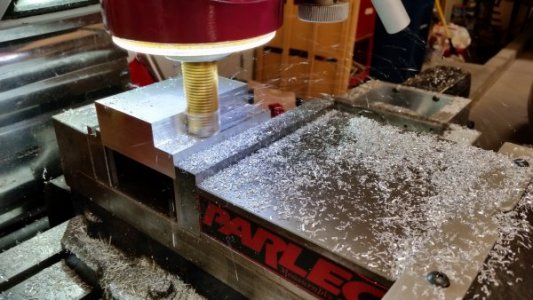- Joined
- Dec 7, 2015
- Messages
- 519
Chris- that all seems like good information, but can you qualify the statement below with any documentation?
"Is this for a manual 2-3hp milling machine? If so, I think you'd be better off spending $17 on a good HSS end mill"
Why is that a true statement? From my (admittedly limited) experience, as well as what I read when looking into coatings, the fact is that ZrN coating adds lubricity that bright finish end mills simply don't have. On top of that, the coating increases tool life due to the increased hardness as well as temp resistance. I can't find the lubricity rating for bright finish micrograin carbide tooling, but I did find it for the ZrN coating (at 0.5). I think it's easy to make the case that high speed machining DOES require much faster and more efficient chip evacuation than slower spindle speeds, but I don't see why that eliminates specialty coatings from being effective for manual machines. With the increase in temp resistance and hardness, it seems like a big win to me. Am I missing something obvious?
"Is this for a manual 2-3hp milling machine? If so, I think you'd be better off spending $17 on a good HSS end mill"
Why is that a true statement? From my (admittedly limited) experience, as well as what I read when looking into coatings, the fact is that ZrN coating adds lubricity that bright finish end mills simply don't have. On top of that, the coating increases tool life due to the increased hardness as well as temp resistance. I can't find the lubricity rating for bright finish micrograin carbide tooling, but I did find it for the ZrN coating (at 0.5). I think it's easy to make the case that high speed machining DOES require much faster and more efficient chip evacuation than slower spindle speeds, but I don't see why that eliminates specialty coatings from being effective for manual machines. With the increase in temp resistance and hardness, it seems like a big win to me. Am I missing something obvious?

